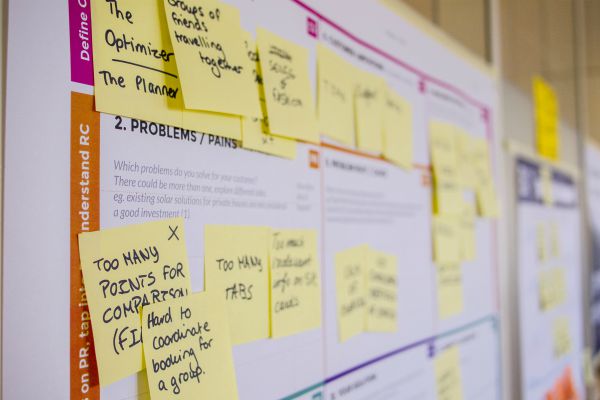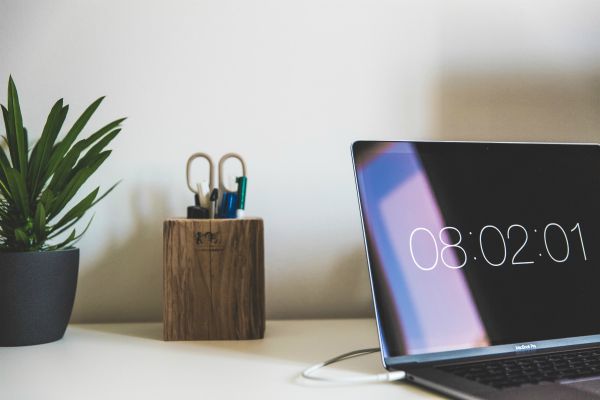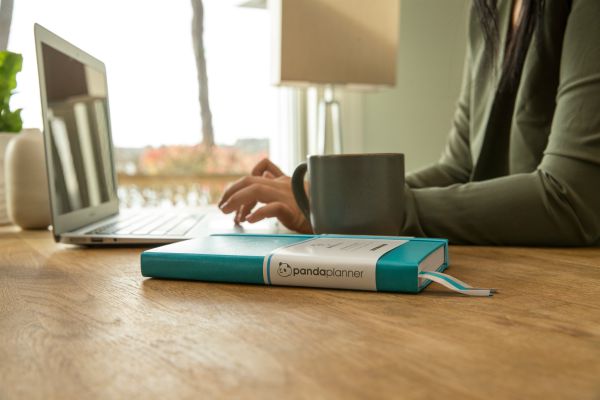Sometimes it seems like upping your productivity is the key to winning at life—you’d finally have more time to do the things that matter most to you while feeling fulfilled and present at work. While there’s not exactly an instant productivity switch (though we’ll be the first to tell you when that happens), there are several science-backed ways to get more done in less time. It’s a good bet that the most productive people you know have already made them habits. Now it’s your turn.
5 Productivity-Boosting Habits
1. Plan work ahead of time

Before you dive into a project, take a pause. We know, it sounds a little counterintuitive but bear with us. Research shows, taking the time to plan your work before you get started is actually more efficient.
The best way to do this, suggests science, is to plan backward. A recent study found that working in reverse chronological order—i.e., starting at the end and working yourself back step-by-step to the start of the project—resulted in less time pressure than planning forward.
Bonus: The study authors also found that backward planning led to boosted motivation and performance since this mental trick forces you to think about the steps of your goal more clearly and efficiently.
2. Break your to-do list into batches

Today’s world isn’t exactly designed to make you more productive—every time your phone buzzes, it’s pulling you away from the task at hand and killing your productivity. Switching gears to answer a quick email actually costs people an average of 23 minutes and 15 seconds, according to a series of studies by productivity researcher, Gloria Mark.
Short of throwing your phone out of your office window—if only—there is an antidote to all that distraction. Productivity researchers call it “batching”—organizing your to-do list in a way that groups similar tasks together so you focus on one area at a time. Rather than jumping from task to task without accomplishing much, batching eliminates all that mental ping-pong. Bundling that time into one block on your calendar can help you feel more productive, according to a 2016 study.
3. Set a goal

There’s a reason goal-setting is a go-to productivity habit—it works. Research shows that the motivation boost you get when you set a goal for the day makes you more likely to hit it.
In a 2015 study, researchers looked at how this idea plays out in the most literal sense: production levels on an assembly line. Researchers asked four groups of participants to assemble a gadget—three groups had goals for either focusing on gadget quantity, focusing on gadget quality, or conserving their energy, while the control group had no goals at all. Having a goal—you guessed it—made the workers more productive; the study found that goal-setting can boost your productivity by as much as 15 percent.
That 15 percent can give you hours of your time back. Now all you have to do is figure out how to use it.
4. Prioritize

So you have a plan for what you need to do, broken down into batches with a set of goals for your day—how do you decide what to tackle first?
Jumping into your to-do list at random is a productivity killer, according to research. Setting the right priorities, on the other hand, is one of the most powerful productivity boosters, as demonstrated in a large-scale corporate study by sales software company Velocify. After following a million leads for a minimum of 90 days, the study found that salespeople who prioritized their tasks were able to manage 12 percent more work than those who didn’t. Companies using office-wide prioritization techniques meanwhile, had conversion rates nearly 200 percent greater than those who didn’t.
The moral of the story? Make sure your top priorities get done first. Productivity experts suggest this strategy will give you an exponential productivity boost. In a 2015 Ask Me Anything on Reddit, renowned behavioral economist and psychology researcher, Dan Ariely, explained that you’re usually most productive about two hours after you get up in the morning. In other words, use that high-efficiency time for your top priorities to smash through your to-do list fast.
5. Have a motivating morning routine

A key habit in any good productivity plan is starting your day off on the right foot. Research shows, getting up on the wrong side of the bed tangibly affects your productivity. In a 2011 study, researchers found that workers who started their day in a negative way were less productive at the office. They theorize the bad start might actually lead to less cognitive flexibility, which can hinder your ability to work toward your goals.
The flipside of this is true too—establishing a positive routine can help motivate you. In research from the Center for Advanced Hindsight, researchers looked at how establishing a “motivating routine” could help participants stick to their goals at the gym. They found that things like stretching or practicing mindfulness made participants more willing to work out. Apply that to your workday by creating a motivating morning routine like listening to an inspiring podcast while writing out your goals for the day.
Bonus: Here’s a tool that puts all of this together for you
You can do all of this on your own, of course, but we all know how difficult it can be to build new habits and hold yourself accountable. That’s why a tool like Panda Planner is essential to get organized, focused and happier.
Panda Planner is a daily planner that’s designed to make happiness and productivity automatic. Based on the latest positive psychology and neuroscience research, Panda Planner not only helps you prioritize your tasks and finally focus again but also has simple exercises to rewire your brain for happiness and positivity. Panda Planner makes success super simple—all you have to do is follow along.
The best part? You can get 10% off your Panda Planner today with the code PANHABIT.

Our recommendation: Get a Panda Planner to bring productivity into your life today. Use the coupon code PANHABIT to save 10% at checkout!
*Code is valid for one-time use only.
Author: Macaela Mackenzie
Macaela Mackenzie is a freelance writer and content strategist. When she doesn’t have her nose in a research journal or the New York Times, she’s likely to be found looking for punny greeting cards or an excuse to explore a new travel spot.

Let Us Know What You Think